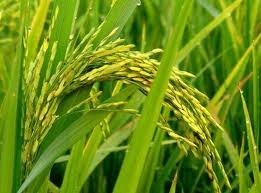 Japan and rice are often synonymous when one thinks of the Orient and time-honoured traditions in the Asian world.
Japan and rice are often synonymous when one thinks of the Orient and time-honoured traditions in the Asian world.
However, the base of knowledge of most Westerners is sadly deficient when it comes to understanding the broader cultural, political, and economic significances of rice farming in Japan. Perhaps, sushi aficionados understand the admiral taste differences of "sticky rice", their knowledge of the grain’s subtleties may end with their taste buds.
Recent headlines about rice futures returning to trading bourses in Japan have raised eyebrows, but what exactly is happening in this corner of the planet where secrecy is the norm?
Ageing farmers
The trading of rice futures in Japan was formally abolished in 1939 due to the onset of World War II, but the reasons for its impending return are entwined in a long history involving many issues that have taken years to address. Nothing moves quickly in Asia, especially in Japan, without general consensus at many levels.
For starters, Japan is actually a little smaller than California, and only 12% of its land mass is arable land, primarily devoted to the cultivation of rice.
However, rice farming is a labour-intensive occupation. And, as much of Japan’s youth has migrated to cities, rice farming has become more of a part-time profession for small and older farmers. Indeed, as the industry has declined over the past 50 years, the average age for a rice farmer in Japan has risen to 66.
Those farmers that remain have been heavily subsidised with price supports – a source of irritation for foreign rice producers, but, given the age of current farmers, an issue many feel will fade away.
Rich history
The Tokyo Grain Exchange, sensing a change in political support policies, applied to Japan’s agriculture ministry for a licence to trade rice futures – a request which was approved for a two-year trial period.
"Japan has a 280-year history of trading rice futures, with a 70-year break, and this tradition will be passed on," noted Yoshiaki Watanabe, the president of the Tokyo Grain Exchange.
The trading of rice futures actually dates back to the early 1700s. Technical traders are aware that "candlesticks" were developed by rice merchants of that era, and the study of these chart formations have benefited traders in not only commodities markets, but also in stocks and forex trading. The nuances of fluctuations in the "USD JPY" currency pair can be discerned from the interpretation of patterns of these simple formations over time.
Over the past 70 years, however, the agriculture ministry has moved to protect rice growers with artificial price supports and the elimination of futures trading due to its potential negative impact on pricing. Under these conditions, hedging was unnecessary.
Back to the future
Commodity exchanges in Japan have declined in volume since investing restrictions were enacted in 2005, ostensibly to shield individual investors from trading in riskier assets. Bourses dropped from seven to three over the course of time as volume slumped.
The re-introduction of rice futures is expected to boost trading volume and bring back profitability to this struggling industry. Volume should increase by 40,000 lots per day, as individual and corporate investors trade this popular domestic product.
Rice is the world’s most important food crop, surpassing both wheat and corn. Over half of the world’s population depends on it, and in Japan, annual rice output exceeds $22bn.
The government has now relaxed its system of price supports and subsidies. It is now time for the market to do what markets do best – regulating current and future pricing behaviour.
http://www.agrimoney.com/feature/rice-feeds-hope-for-tokyo-commodities-trading–120.html

Deprecated: strpos(): Passing null to parameter #1 ($haystack) of type string is deprecated in /home/agriviek8Qv/agriviet.net/public_html/wp-includes/comment-template.php on line 2522